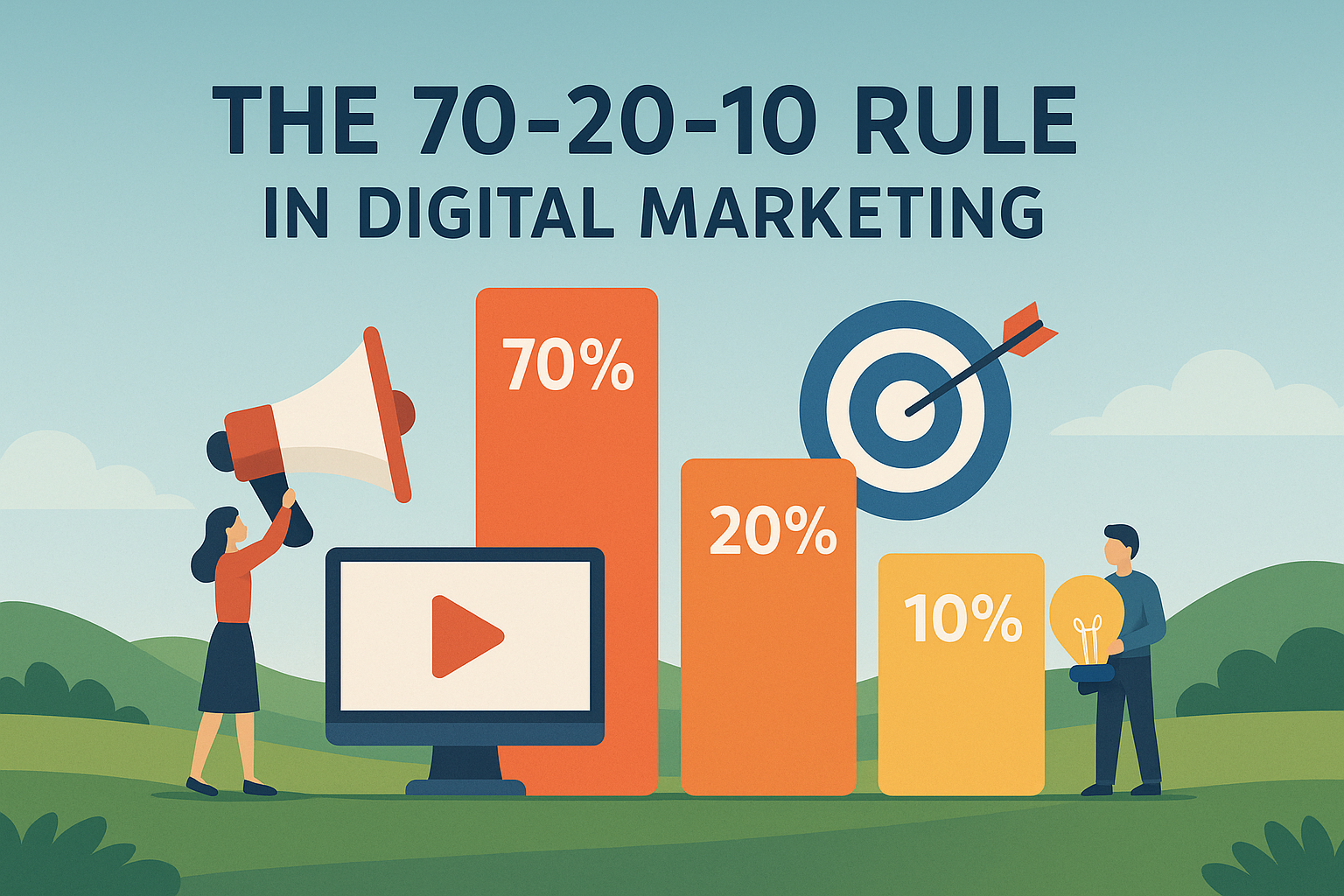In modern countries, digital marketing is one of the key elements for a business to thrive and to obtain leverage, spreading a wider reach in their niche, thus attracting clientele and boosting revenue.
Three common pillars that we usually find as the base on which trades build their success are: strategy, innovation, and experimentation. Surely, especially if you work within a company structure, this is not the first time you have heard about these three magic words, which sometimes are taken as buzzwords, but it is not the case. They do carry substantial weight, and if applied correctly, they enable businesses to flourish.
Let us delve deeper to see how we ideally approach them and why these three vital fundamentals need to be segmented as part of a business plan or tactics, to attain the goal within a reasonable or calculated and allocated budget.
The Power of the 70-20-10 Rule
In this day and age, we are so regularly inundated with an array of new marketing tools and techniques that many end up in confusion or overwhelmed. Not everyone has the expertise to recognise which approach is best for a specific company.
We find that in many cases and across the board, the 70-20-10 rule is often applied, as it makes sense to distinguish matters at hand by order of importance, how much time is worth commiting on, and what expenditure to assign.
There are several interpretations of how this rule can be utilised in a specific marketing strategy, including content and social media marketing, to name two top ones, but the rule is flexible and can be implemented in various areas.
However, as we will now see, the majority of digital marketing campaigns spread the 70-20-10 rule as follows.
The 70% Strategy
Every business has some sort of business plan (hopefully), or a strategy which encapsulates the overall game plan to reach prospective clients and try to switch them to loyal consumers of their own products or services.
A marketing strategy usually also holds the company`s value proposition, key brand messaging, data on targeted customers` demographics, and other high-level elements.
Thus, it is common practice that a business would spend the majority of its time and workforce on this daily run-of-the-mill segment, so in the case of the aforementioned rule, the 70%.
It stands to reason, then, that strategy takes the biggest cut of the pie from the 70-20-10 rule, as companies need most of their resources to focus on the main plate here to finally generate revenue. We also need to keep in mind here that digital marketing strategies can change or evolve over time, depending on shifting customer preferences, fluctuating consumer spending patterns, and changes within the business itself.
The 20% Innovation
Innovation is a means of crafting and bringing new things into existence, usually to resolve issues at hand. In business, this translates into inventing and creating novel ideas and products, or taking existing ones and renovating them into something better.
As you may presume, this takes much more time in the form of brainstorming, meetings, and `thinking outside the box` rationales to be put on the table and discussed at length before trying to create and try. When finally, all this transforms into a refined service or special product, which enhances the company`s penetration in the market or a bigger reach within its niche, then it is called an innovation.
It is imperative for a business to keep renovating itself also in its marketing approach, its services, and products, to keep abreast of these times, to remain relevant, and compete at par on the same playing field as their direct adversaries. However, businesses tend to allocate innovation to a smaller group of expert staff, thus, it will take more time to yield a novel idea, craft it, and market it. So, it is understandable that a lesser portion of the rule is allocated here, the 20%.
The 10% Experimentation
If you recall school days, as in science class, experiments started with a hypothesis including variables to test if anything else occurs.
The same can be said in marketing, a business will test its marketing strategies to determine which yields the best result, just like in A/B testing on website pages. Now, while testing, variables will be changed one at a time to accurately measure the impact. Over time, it will be evident that cold calling is more effective during a particular time of the day, for example, thus a pattern is formed also for billboards, emails, ads via social media platforms, all the while learning which best applies and works most for your audience and your brand.
The last piece of the pie of our rule here is the 10%, then, which is usually the practical rule of thumb taken by businesses to allocate their monthly advertising budget to testing. This way it provides enough flexibility to attain meaningful insights while securing much of the budget for proven strategies.
In Conclusion
onsidering that the 70-20-10 rule has been around since the 1980s means that it is doing something right. It makes a lot of sense on the surface, as one can distribute according to importance.
In our specific case, digital marketing, the business is segmenting in line with priorities, workforce, and costs, ideally resulting in minimum disruption and launching an orchestrated approach to reach targets in a swift and structured manner.
Staying flexible is key, as nothing is cast in stone, and even the 70-20-10 rule can be modified and customised in line of a specific digital marketing need. Ultimately, this rule serves to implement a budget-conscious marketing campaign while avoid disrupting any other workforce time within the company structure.
We wrap up and leave you with some hot tips. Keep in mind prior to applying the 70-20-10 rule to define your market goals, understand your audience, determine monthly expenses, research the competition, audit past marketing performance, and choose your marketing channels wisely.

